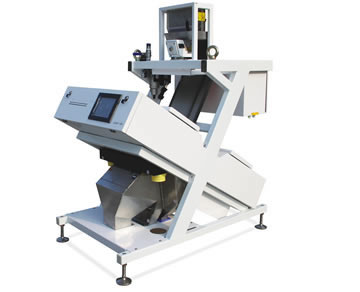Rice Color Sorter
Rice Color Sorting Machine
Rice Color Sorter
Enhancing Quality and Efficiency of Rice Processing Plant
Rice, a staple food for a significant portion of the global population, undergoes various processing stages before reaching consumers. One crucial aspect of rice processing is the sorting of grains based on their color. CSG rice color sorter, a cutting-edge technology, has emerged as an essential tool in the agricultural sector, significantly improving the quality and efficiency of rice production.
Rice color sorting involves the use of advanced machinery equipped with optical sensors and image processing technology. The primary objective is to identify and segregate rice grains based on their color characteristics.The sorting process plays a pivotal role in eliminating impurities, defects, and foreign materials, ensuring that the final rice product meets high-quality standards.
1.1 Importance of Color Sorting
The color of rice grains can provide valuable insights into their quality. Discolorations, stains, or irregularities may indicate the presence of contaminants, damaged grains, or other undesirable elements. By employing a rice color sorter, processors can systematically remove such impurities, thereby enhancing the overall quality of the rice.
1.2 Working Principle
Rice color sorters utilize advanced technology to analyze each grain's color in real-time. Optical sensors capture detailed information about the color spectrum, and sophisticated algorithms process this data to make instantaneous decisions. Air ejectors or mechanical systems then separate the defective grains from the good ones, ensuring a high degree of precision in the sorting process.
2.1 Optical Sensors
Modern rice color sorters are equipped with high-resolution optical sensors capable of capturing detailed images of individual rice grains. These sensors analyze the color, size, and shape of each grain, providing accurate information for the sorting algorithm.
2.2 Image Processing Algorithms
The heart of the rice color sorter lies in its image processing algorithms. These algorithms interpret the data from optical sensors, distinguishing between acceptable and unacceptable grains. The algorithms are continually refined to improve accuracy and adapt to various rice varieties and processing conditions.
3.1 Quality Improvement
The primary benefit of employing a rice color sorter is the significant enhancement in the quality of the final product. By removing defective grains and impurities, processors can deliver rice with consistent color and texture, meeting consumer expectations and regulatory standards.
3.2 Increased Efficiency
Traditional sorting methods are time-consuming and often rely on manual labor. Rice color sorters automate the process, leading to increased efficiency in production lines. This not only accelerates the processing speed but also reduces labor costs and the likelihood of human errors.
3.3 Waste Reduction
The precision of rice color sorters minimizes the chances of false positives or negatives in sorting. This, in turn, reduces the overall waste generated during processing, making the entire operation more sustainable and environmentally friendly.
As technology continues to advance, the future of rice color sorting holds exciting possibilities. Integration with artificial intelligence, machine learning, and enhanced sensor technologies are likely to further improve sorting accuracy and adaptability to diverse rice varieties and processing conditions.
Conclusion
The rice color sorter stands as a testament to the ongoing technological evolution in the agricultural sector. Its ability to enhance quality, increase efficiency, and reduce waste has positioned it as an invaluable asset in rice processing. As the industry continues to embrace innovation, the rice color sorter remains at the forefront,contributing to the production of high-quality rice for global consumption.
Have sorting problem?
We are committed to providing you with the world's top sorting solutions, please feel free to contact our engineers for technical support!
CALL US
